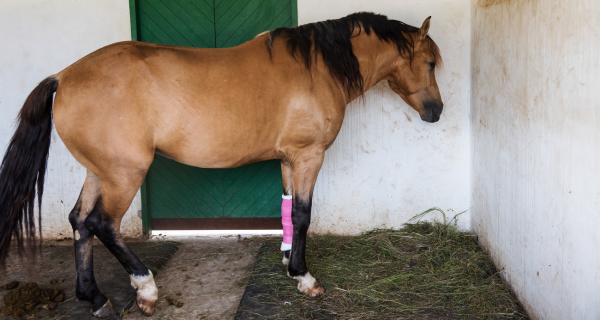
Laminitis is a common, painful and potentially disastrous condition of the horse’s foot whereby there is a severe inflammatory process in the sensitive laminae of the hoof. These laminae are the structures which maintain the integrity of the foot and which bind the pedal bone (also called the coffin bone, distal phalanx or P3) to the hoof capsule.

When these laminae become inflamed in laminitis, they usually suffer from a decrease in their blood supply, causing them to die back. This dying back of the laminae means that they are no longer capable of maintaining the pedal bone in its normal position. The combined weight of the horse and the pull of the deep digital tendon which inserts onto the pedal bone, causes the pedal bone to rotate. In very acute cases the inflammation may be so dramatic that all the laminae may be compromised to such an extent that the entire pedal bone sinks downwards into the hoof capsule (sinker or founder).
As expected this whole process is extremely painful and often career ending if not a life threatening condition, and thus requires immediate veterinary attention.
Causes of Laminitis

Laminitis is often the end stage manifestation of many disease processes and therefore there a many causes or instigating factors:
• Carbohydrate overload : over-feeding of grain lush pasture
• Gastrointestinal problems, particularly after severe colic
• Recently foaled mare which has retained the foetal membranes (placenta)
• Obesity especially fat pony grazing lush pasture
• Any illness which produces a toxaemia
• Non-weight-bearing lameness in the opposite foot over a prolonged period of time
• Common complication following colic surgery
• Corticosteroids
• Concussion or extreme trauma to the foot (galloping on very hard surface)
• Hormonal problems such as Cushing’s disease
• Ingestion of certain plant toxins

Phases of Laminitis
In an attempt to determine the severity of the disease and its prognosis, the condition is often divided into 4 phases. However not all horses will go through all of these phases.
1. Developmental Phase (20 to 72 hours, few clinical signs)
This is the time from the start of the initial trigger e.g. over-eating, colic etc. to the onset of the first signs of lameness.
2. Acute Phase (34 to 72 hours classic clinical signs)
Onset of lameness in one, two (usually the front feet) or all
four feet and of varying severity, plus other clinical signs.
3. Subacute Phase (72 hours after onset of lameness)
On x-ray no internal rotation and clinical signs have receded. Usually these horses will make a full recovery. A fever ring may be seen on the hoof wall as it subsequently grows down.
4. Chronic Phase or Founder
On x-ray there is rotation of the pedal bone. (Fig.1) Prognosis is usually based on the severity of the rotation and response to treatment and remedial shoeing.
Clinical Signs & Symptoms of Laminitis in Horses

As with any disease the clinical signs will vary with the severity of the condition and the phase of the disease be it acute or chronic.
• Severe lameness which may involve all 4 feet, but the forelegs are more frequently affected
• Horses with laminitis will be reluctant to move and will show a typical “broken sawhorse” stance, where the limbs are extended out in front, in an effort to reduce their weight load. The laminitic horse puts his front feet out front trying to load the heel and the hind feet under the midline of the belly trying to use them for support. (Fig.2)
• Increased digital pulse
• Heat in the foot
• Reluctant to pick up one of the front feet
• Pain when pressure is applied to the toe area
• In severe cases with significant rotation of the pedal bone, there may be a palpable indentation at the front of the coronary band and or a protrusion or dropping of the sole of the foot. (Fig.3)
• Laminitis rings, seen in chronic laminitis due to abnormal hoof wall growth. A concave dorsal hoof wall may also be noted. White line disease is also a sign of chronic laminitis. (Fig.4)

Diagnosis of Laminitis in Horses
Diagnosis is made on the basis of the clinical findings and radiographs. Radiographs taken of the feet will reveal the extent of rotation or displacement of the pedal bone.
Treatment of Laminitis
The objectives of treatment in horses with laminitis are to contain the processes that cause the initial weakening of the lamellae, and to reduce or redistribute stresses that cause the damaged lamellae to separate. As such, the treatment can be divided into medical therapy and supportive care.
Medical Therapy:
1. Vasodilators:
These drugs are aimed at increasing the blood flow to the laminae in the foot, and by doing so, try to limit the number of laminae that weaken and die as a result of limited blood supply to the foot.
2. Non-Steroidal Anti-Inflammatory Drugs (NSAIDS):
These are used routinely in the management of laminitis as they decrease inflammation and also have analgesic properties. Some NSAIDS also have anti-endotoxic effects, which is beneficial as endotoxins have been implicated as a possible cause of laminitis.
Supportive Care:
The main aims of supportive therapy are to stabilise the pedal bone and to control pain. The greatest overall stresses on the foot are associated with weight bearing, but in horses it is difficult to take weight off i.e. putting horses in slings or partially floating them in water is not practical. Therefore, the following measures may help in reducing the stresses on the foot:

1. It is imperative that a horse with acute laminitis is kept in a stable – this limits the horses’ movement and therefore takes pressures off the feet.
2. Remove conventional shoes if they are on – conventional shoes do not provide any support to the frog or sole of the foot, rather they concentrate the force around the wall of the hoof, which will make matters worse.
3. Use bedding materials that conform to the shape of the foot as this will help to redistribute the pressure evenly over the foot, and take pressure off the walls. Sand is significantly better than shavings. A horse standing on a soft surface i.e. sand, can reposition its feet for optimal comfort.
4. Weight can also be redistributed towards part or all of the ground surface of the foot by filling the concavity of the foot with a packing material (this is mainly used for acute cases of laminitis). Many products such a silicone putty or high density Styrofoam have been tried with success.
5. Corrective trimming of the hoof:
One of the main principles of corrective trimming is to reduce the break over of the hoof at the toe. The heels may also be elevated with wedge pads – this reduces the force of the deep digital flexor tendon pulling on the pedal bone. Wedge pads are often used in combination with bevelling the toe to reduce break over.
6. Remove any grain or rapidly digestible carbohydrates from the diet
7. Walking horses with acute laminitis is not a good idea
The severity of laminitis may vary greatly, such that the treatment may be as simple as removal from pasture, rest and NSAIDS for the pony that over-eats lush pasture. More severe cases would require more intensive therapy and over a more prolonged period. In cases of chronic laminitis a combination of veterinary, medical, dietary and farriery will all be necessary to varying degrees to help the horse to return to a normal routine.
Due to the seriousness of the condition and its potential to be career ending if not life threatening, treatment must always be instigated without delay. Thus laminitis should always be viewed by the owner as a true veterinary emergency.
Information supplied by Dr. Tony G. Doherty MVB (Hons), MRCVS. MBA


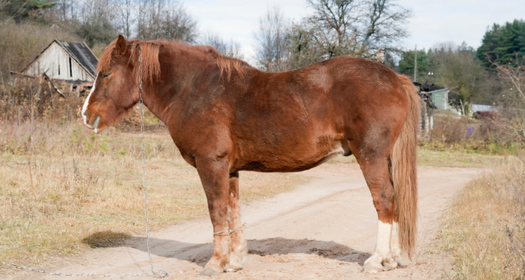
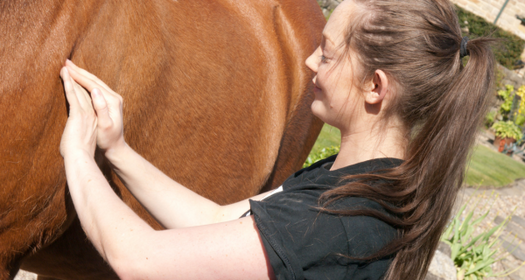
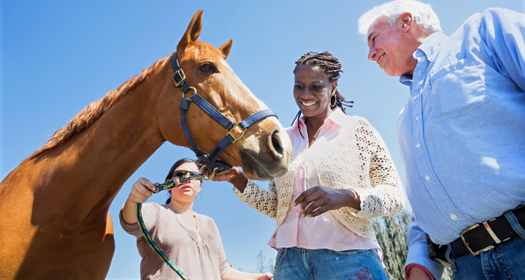
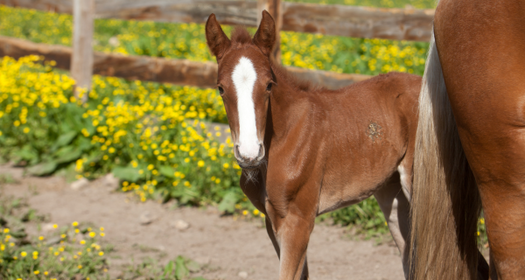
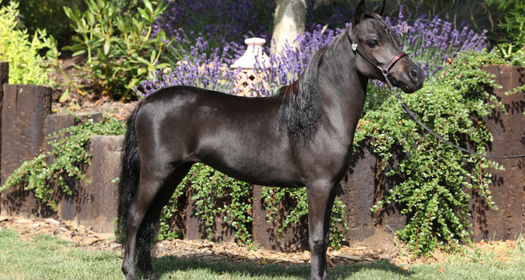




Leave Comment Below